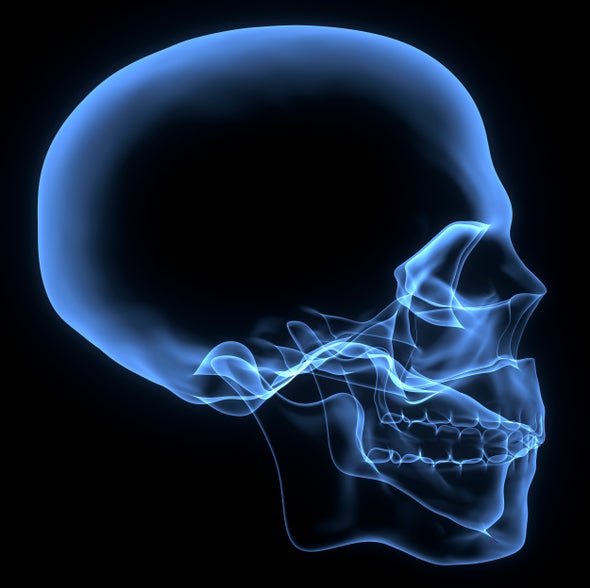This is Scientific American's 60-second Science, I'm Christopher Intagliata.
Certain concert venues, like Boston's Symphony Hall, are known to beautifully reflect the sounds of an orchestra. It turns out there's a similar process at play in your cochlea, deep inside your ear—where a tiny bony cavity houses the organ that allows you to hear.
"It's like its own tiny little acoustics chamber, if you will. So anything and everything you hear is going into our ear and then going into this little bony chamber."
Mike Gordon, a psychologist at William Paterson University in New Jersey. But while studying this process, he also found there's actually a lot of variability in the way people hear. Some frequencies can appear tens of decibels louder or quieter than average—based on the resonant properties of a person's skull.
"We were shocked. My first version of the draft had exclamation points all over the place, but we eventually removed those from the final copy."
First, Gordon's team gave 30 volunteers a hearing test—the standard type, where different frequencies of tones are played at varying loudness. Then they did a "bone conduction" hearing test, where vibrations are transmitted directly onto the skull, from behind the ear.
Finally, they projected white noise like this...
(CLIP: White noise sample)
... through the skull, from behind the ear, and recorded what came out at the forehead. This is that white noise...
(CLIP: White noise sample)
... filtered through Gordon's skull:
(CLIP: White noise sample 2)

With those filtered samples, they were able to see the unique spectral fingerprints each volunteer's skull left on the white noise, amplifying some frequencies and damping down others. And those ups and downs actually correlated to each volunteer's ability to perceive certain frequencies in the bone-conduction hearing test. Which means:
"The skull itself, because it's such an intimate and personal thing, is going to shape your experience of the world, perceptually."
The findings appear in the Journal of the Acoustical Society of America.
Although the research is just preliminary, Gordon says there might be some intriguing therapeutic uses of this new insight. "What if we could cheaply and easily run broadband noise through someone's skull and look at how it filtered—and then do it again later. Would it show us an injury? Well, it might if the skull changed dramatically, which could indicate a head injury."
And, more trivially, he says, perhaps it could explain why you really can't stand that one singer everyone else loves. Just blame it on the resonant properties of your skull.
Thanks for listening for Scientific American's 60-second Science. I'm Christopher Intagliata.












